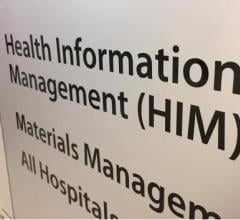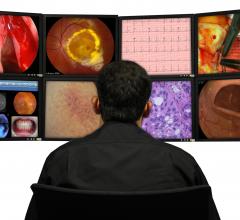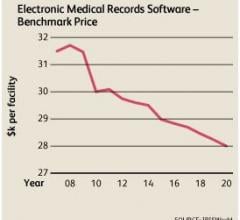
March 1, 2010 - “Meaningful use” is poised to be the major driver of healthcare information technology (IT) spending in 2010, in addition to other supporting factors, such as recovering economy, suggests results of the 21st Annual Healthcare Information and Management Systems Society (HIMSS) Leadership Survey.
Although criteria for meaningful use won’t be established until later this year, nearly four-fifths (59 percent) of the 398 respondents to this year’s survey say they plan to make additional investments to position themselves to qualify for the incentives.
Driven by meaningful use incentives and a rebounding economy, nearly three quarters (72 percent) of respondents said they expect their IT operating budgets to increase, bringing that response back to the levels of two years ago. Last year, only 55 percent of respondents expected an increase in their budgets. Nearly half (49 percent) who said their budgets would increase this year reported that meaningful use would be a driver. Another 45 percent reported the increase would be due to an overall growth in the number of system and technologies at their organization.
Asked to identify their single IT priority during the next two years, 42 percent of respondents identified meeting meaningful use criteria. Many likely will be doing so by implementing clinical systems: when asked to identify their organization’s primary clinical IT focus, 35 percent said it would be ensuring their organization has a fully functional electronic medical record (EMR) in place and 27 percent said it would focus on installing a computerized provider order entry (CPOE) system.
Meaningful use was reflected in other answers throughout the survey. For instance, more than one-third (38 percent) said government issues were the business issue they felt would have the biggest impact on healthcare in the next two years, whereas last year, only six percent thought that was the case. This year’s response reflects compliance with new regulations regarding meaningful use, as well as coding upgrades and claim processes impacted by ICD-10 (the World Health Organization’s International Classification of Diseases) and the updated version of HIPAA (5010). Financial considerations (such as demand for capital and finding new revenue resources) was identified as the top business issue last year, chosen by 54 percent of respondents. This year, 23 percent identified it as the top business issue.
Two-thirds (66 percent) expected to increase the number of IT staff, which is consistent with 2008 data, after dipping to less than half a year ago.
Security concerns continue to remain consistent. One third of respondents (34 percent) said an internal breach of security was their top security concern, and nearly one-quarter (23 percent) said their organization had a security breach in the past year. Thirty percent said their major security concern was compliance with Health Insurance Portability and Accountability Act (HIPAA) security regulations and Centers for Medicare & Medicaid (CMS) security audits.
Healthcare organizations continue to make progress on EMR adoption. Nearly half (48 percent) said they have a fully operational EMR in at least one facility, compared to 41 percent last year. Nearly a quarter (22 percent) said they have a fully operation EMR throughout their entire organization, up from 17 percent last year. Almost a third (32 percent) have begun to install an EMR in at least one facility.
Asked about what area of patient care they felt IT could have the most impact, more than a third (37 percent) said it could improve clinical and quality outcomes. Another quarter (28 percent) felt the biggest impact would be in reducing medical errors and improving patient safety. The 2009 survey identified the same top two items, with the order reversed. Additionally, nearly all (95 percent) said clinicians play a role in the IT process at their organizations.
Other findings of the 21st Annual HIMSS Leadership Survey include:
- Nearly one-quarter (24 percent) said lack of adequate financial resources/lack of budget would be the most significant barrier to successful healthcare IT implementation at their organization.
- Nearly half (43 percent) of respondents said their organization participates in a Health Information Exchange (HIE): 37 percent in their area and seven percent in the state-mandated HIE.
- The level of integration between IT and overall organizational strategies encouragingly remains strong, with 87 percent answering affirmatively this year, compared to 84 percent last year. Nearly half (47 percent) said the IT plan is a component of the organization’s overall strategic plan, an increase from 2009, when 38 percent said that was the case.
The self-administered Web-based Leadership Survey included 398 participants between Dec. 14, 2009 and January 29, 2010. Those surveyed represent nearly 270 unique healthcare organizations and nearly 700 hospitals throughout the United States. The average bed size of the hospitals was 235 and the median bed size is 128. Eighty five percent of respondents said they are senior IT executives at their organizations, and 66 percent are corporate chief information officers (CIOs).
For more information: www.himss.org


 June 14, 2024
June 14, 2024 









